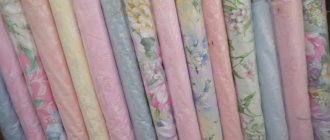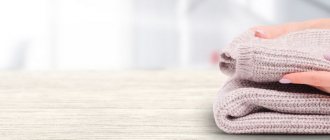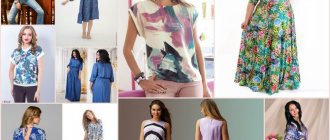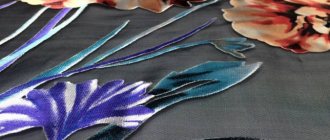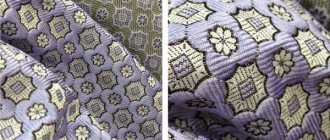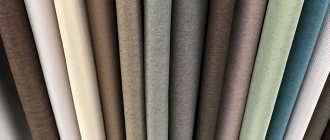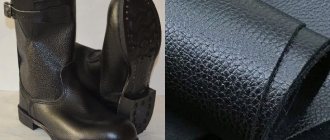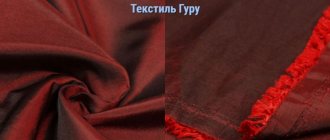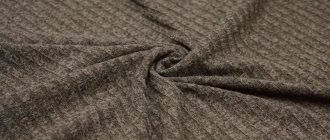A little history
Twill has been used for several centuries. His homeland is Scotland. The first mentions date back to 1830 and are associated with an incident. The events were described by the Duke of Windsor in his memoirs, Remembering Windsor.
According to the text, an English merchant received new material from Scotland. It was accompanied by a description in which the unusual fabric was referred to as twill. Through inattention, the merchant read “tweed” (already known in those days) and launched the new product to the masses under this brand.
The confusion between twill and tweed fiber still exists today: they are indeed similar.
Throughout its history, the fabric has undergone many experiments: from variations with raw materials to playing with production methods. Initially, natural cotton threads were used as the basis for weaving. With the rise of synthetics, the possibilities for using fibers have expanded significantly.
In the 21st century, twill is often a mixed material.
Features of origin and production
Many sources tell a story dating back to 1830 that talks about confusion over the names "tweed" and "twil". It will no longer be possible to find out whether this is true or a beautiful fairy tale, but even now some people get lost in consonant names, just like the London merchant once did.
Twill or satin twill - what kind of fabric is it? Reviews primarily emphasize the silkiness and tenderness of this material. It is somewhat similar to satin. It has the same pleasant shimmer, but has a lower density.
Twill is a twill weave fabric. This is a mixed fabric, so on the label in the “composition” column you can find a varied percentage of fibers.
The base can be cotton, polyester, wool or silk. Due to the ratio of components, the fabric can be divided into separate categories - polysatin or tweed. Polysatin is similar in characteristics to satin, but contains a high percentage of synthetic fibers in its composition. Tweed is a woolen material with a twill weave.
Composition and varieties
Twill is made from cotton, silk, polyester, elastane, and various combinations of them.
Based on the raw materials, the following popular types of this fabric are distinguished:
- twill-satin, or cotton type. Ideal for sewing light summer clothes. Cotton fibers provide maximum breathability.
- Twill-stretch, in other words - silk look. The most common composition of such fabric is: 98% cotton and 2% elastane. The percentage of raw materials can deviate in one direction or another by up to 3 units. Thanks to a small proportion of elastane, the products stretch better and do not wrinkle. This type of twill is widely in demand in light industry.
- Mixed or mixed type. This option is a combination of cotton (occupies from 30 to 97%) and synthetics. Of the artificial components, polyester is the most popular. Mixed fabric is actively used in sewing workwear, suits and uniforms.
The last two varieties are more affordable. Artificial fibers especially reduce the cost of production.
Scope of application
The material is suitable for the manufacture of any type of textile products. Most often it is used for sewing special work clothes.
Workwear
Uniforms made from this material meet all the requirements of SanPiN:
- does not cause allergic reactions;
- protects skin from dust and dirt;
- allows the body to breathe.
Fabrics that are used for sewing special professional clothing may contain synthetic impurities. Artificial fibers provide the material with:
- strength;
- wear resistance;
- crease resistance;
- eliminate shrinkage.
Raincoats, bags, and backpacks are also made from fabrics that use natural and synthetic fibers.
Mold material
Twill properties
The fabric is characterized by a textured surface, sometimes with barely noticeable knots. The smoothness and noble shine are remarkable. The special weaving method gives the fabric many advantages, regardless of its composition.
Advantages of twill products
- Strength and wear resistance. This characteristic makes the material stand out against the background of satin or twill.
- Density.
- Softness. The peach effect makes twill pleasant to the touch and comfortable to wear.
- Light drape.
- High breathability. The body "breathes".
- Dustproof. By allowing air to pass through, the canvas keeps dirt on the outside.
- Not susceptible to deformation. Twill is not deformed: it does not wrinkle, does not break, does not stretch or shrink.
- Resistance to sunlight. Clothes do not fade.
- Not susceptible to fungus and moths.
- Ability to dry quickly.
- Easy to care for (wash, dry, iron, store). The cotton type is especially unpretentious.
- External attractiveness and neatness.
Minuses
Twill has practically no disadvantages. But it is worth noting that:
- synthetic fibers in the structure can be harmful to allergy sufferers;
- the cotton type has insufficient elasticity and a high price.
Characteristics of twill fabric
Twill is often compared to satin and this is no coincidence. They are similar in characteristics and type of weave. It is defined by a diagonal pattern on the front side and a texture in the form of a small scar. This is a twill weave.
Read about: what kind of melange fabric is: how it is produced and where it is used.
The intensity of the tilt depends on the thickness, density and twisting characteristics of the threads used. Like satin, twill has a slight sheen. However, despite the same weave, the pitch of the latter is symmetrical and amounts to 2 to 2. Because of this, it is thinner. However, in terms of external signs and tactile sensation, this difference is not so significant. Most may not notice this; the only significant difference is the price.
pros
Advantages:
- Dense but soft fabric;
- Has a slight noble shine;
- Thanks to the peculiarities of the weave, it is durable and wear-resistant;
- It retains dust well on the surface, but at the same time allows air to pass through. This quality is especially important for the production of professional work clothing;
- Retains its shape perfectly and does not fade;
- Practically does not wrinkle or deform over time;
- Dries quickly and does not require special care;
- Due to the fact that the composition is almost 100% natural, the material is hypoallergenic;
- The material enviably stands out among similar ones for its practicality;
- Not susceptible to moths and harmful insects (if the composition does not contain wool)
Modern high-quality dyes are used to make twill. They allow the fabric to remain bright for a long time and not fade. Most often the coloring is plain.
Application area
The material is in demand in the production of all kinds of men's, women's and children's wardrobe items for all seasons, accessories and more. The following are sewn from twill fibers:
- items to be worn in warm and summer months (trousers, shorts, skirts, dresses, T-shirts, shirts, etc.);
- winter and demi-season outerwear (jackets, raincoats, etc.);
- linings;
- home textiles (curtains, bedspreads, blankets, furniture upholstery, tablecloths, napkins);
- bed sheets;
- uniforms for various purposes, medical clothing, school uniforms;
- hats;
Thick twill is well suited for creating professional clothing. A thinner one is for sewing bedding and summer clothes.
Varieties and their applications
Twill with a large number of positive qualities is used for the manufacture of products for the interior, work and casual wear. Lightweight, thin versions of twill - viscose, silk twill are used for making:
- shorts;
- trousers;
- skirts;
- suits.
Viscose Viscose
has increased drape. It is soft to the touch. Skirts, dresses, draperies from this manufactory look beautiful on the figure. Breathable, cool fabric suitable for summer wardrobe.
Viscose stretch
Viscose with a stretch effect is used to make sportswear, tight-fitting underwear, and swimsuits.
Stretch viscose items
Dense cotton fabric with high wear resistance is suitable for urban casual wear: it protects from the sun in summer and allows the body to breathe.
Dense medium-density twill material and twill peach are indispensable in the production of lightweight outerwear:
- raincoats;
- jackets;
- windbreaker;
- hats (caps, Panama hats);
- jackets.
The most popular fabric with a twill weave, a light back and a front part dyed in intense tones is denim. The material is used to make trousers, jackets and skirts for different age groups. Denim is a popular fabric, and there is no home that does not have items made from it.
You might be interested in Technology for making beautiful decorative items from jute
Youth clothing made from jeans
Outerwear is made from hypoallergenic fabric for children and adults. Dense twill twill patterns have found use in interior textiles. They are made from:
- curtains;
- furniture covers;
- bed sheets;
- table sets.
Thick cotton twill with synthetic impurities is used:
- as upholstery for furniture;
- sewing bags, backpacks.
Cotton bedding with twill weave
Important! The well-known twill is also a type of twill.
It is used as a lining for outerwear, night curtains, and bedspreads. Furniture covers are made from it.
Care instructions
Although the fabric is not difficult to use, there are a certain number of rules. They should be adhered to so that things last a long time and do not deteriorate.
- Twill satin can be washed at maximum temperatures with any detergent.
- You need to be careful with other types of fabric. Washing mixed items is permissible at a temperature not exceeding 40 degrees. Bleach and aggressive detergents are prohibited in this case.
- It is advisable to use conditioner to preserve structure and color.
- Drying in direct sunlight is not recommended.
- It is advisable to iron the item while damp.
When purchasing a new item made from this fabric, be sure to read the attached instruction manual.
Cost, what prices depend on
The cost of the material depends on its composition, production method, and the name of the factory. Samples imported from abroad are more expensive than domestically produced material. The price is influenced by the markup that the retailer sets to make a profit.
You might be interested in: Features of the composition of tapestry fabric: what types of material exist
| Type of fabric | Synthetic impurities | Natural fiber | Price |
| Twill twill | Polyester - 50% | Cotton - 50% | 150-200 rub.* |
| Country of origin Russia | 35 % | 65 % | 350-400 rub. |
| Country of origin: China | 35 % | 65 % | 380-420 rub. |
| For workwear | 100-150 rub. | ||
| Furniture fabrics (China) | 300-450 rub. | ||
| Wool tweed (Italy) | 2000-3000 rub. | ||
| Suit fabric(Italy) | 5 % | 50% wool, 45% silk | 3500-4000 rub. |
History of twill creation
Scotland is considered the country where twill originates. This is where this fabric has been produced for several hundred years. It should be noted that this material became available in Great Britain by order of one of the British wealthy merchants; in order to confirm the legality of the goods and its movement between countries, the sellers made the necessary documents. It was there that there was an inscription about the composition of the fabric and its name. The British merchant could not determine exactly what was written; according to one version, the handwriting was very illegible. He managed to read the name of the fabric - tweed. Subsequently, this is what they began to call this fabric. The fact is that at that time tweed was already familiar to the British. Thus, when purchasing this fabric, they often asked what kind of fabric this was, which is different from tweed, but has the same name. In this regard, this material received a consonant name - twill.
Today, twill is very popular and in demand in the manufacture of men's, women's and children's clothing. This material is used to produce items to be worn all year round, so twill socks, trousers, T-shirts, dresses, shirts and other summer and winter items (jackets, raincoats) are an excellent solution. At the same time, twill is an ideal option for home textiles. Today in clothing stores you can find hats made of twill, as well as bed linen, bedspreads, curtains, furniture upholstery, tablecloths and napkins made from this fabric. Currently, twill has become an integral part of the tailoring of uniforms, including medical and school uniforms. This is a universal and common material that is gaining popularity. Today, a mixed type of twill is often used; a successful combination of cotton and polyester provides resistance to external influences, such things are practical and durable. Almost every person has items or other items made of twill in their wardrobe. Due to their accessibility, anyone can afford such twill products.
Price
- Twill twill, composition 50% cotton fiber 50% polyester – price 180 rubles;
- Russian-made fabric with 65% cotton – 380 rubles/meter;
- Chinese cotton twill with 65% cotton threads – 410 rubles;
- Fabric for sewing overalls – 100 rub. /meter;
- Upholstery material made in China – 330 rubles;
- Silk twill made in China for sewing women's hats, printed - 600 rubles;
- Italian wool fabric – 2400 rubles;
- Wool + silk Italy, costume – 3500 rubles.
Follow the link to read what kind of fabric the suit is.
Twill cost
- The price of matter depends on several factors:
- Natural fabric. The higher the percentage of cotton, wool, silk, the higher the price.
- Fabric quality. Angora twill is much more expensive than wool, for example.
- Country of Origin. Fashion trendsetter countries like Italy and Spain keep fabric prices high. Domestic and Chinese-made material costs an order of magnitude lower. The buyer himself decides what is his priority: quality, price or a well-known brand.
Twill will be an excellent compromise in choosing between natural and synthetic fabrics. The material has absorbed all the best properties of wool, cotton, polyester and silk. Clothing and interior items made from twill are not only beautiful, but also comfortable. Modern technologies make it possible to improve twill production. Every day the scope of its use becomes wider, thanks to designer finds and bold decisions. By choosing tweed , buyers kill two birds with one stone: a natural fabric that does not wrinkle and holds its shape well. You can buy twill in online stores or at fabric sales points.
Description and composition of fabric
The material is distinguished by a special weave of threads.
At the beginning of production, twill fabric was 100% sheep's wool. To make it, they used coarse, thick threads of dark gray or brown colors. The heavy, dense fabric attracted attention with its unusual texture, reminiscent of a herringbone or houndstooth.
Over time, technology changed, and cotton or silk fiber began to be added to the main wool thread. This made it possible to sew from fabric not only clothes for business people, but also raincoats, handbags, and fashionable evening dresses.
Today, twill contains a mixture of two or more types of fibers intertwined with twill. The basis can be cotton, synthetic, silk and wool threads. Depending on the ratio of components, the fabric is divided into special categories - tweed or polysatin.
If the fabric contains 35% cotton and 65% polyester, then it is often called polysatin. This combination of fibers allows you to get a beautiful, and at the same time durable and practical material.
Twill is distinguished by a special weave of threads. The warp fibers overlap two or more weft threads, moving one step to the side. A diagonal scar is formed on the surface of the fabric, characteristic of twill weaving. Sometimes, to make fabric, they take untwisted fibers with small knots, which give the fabric a special decorative effect.
